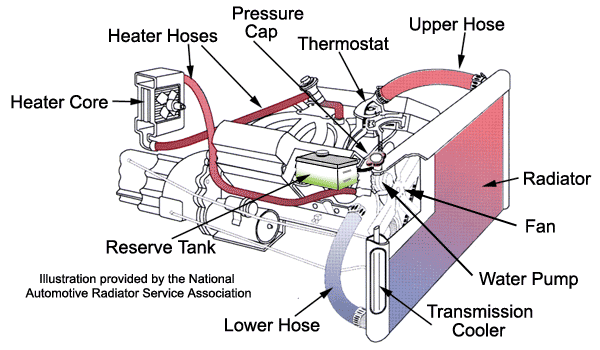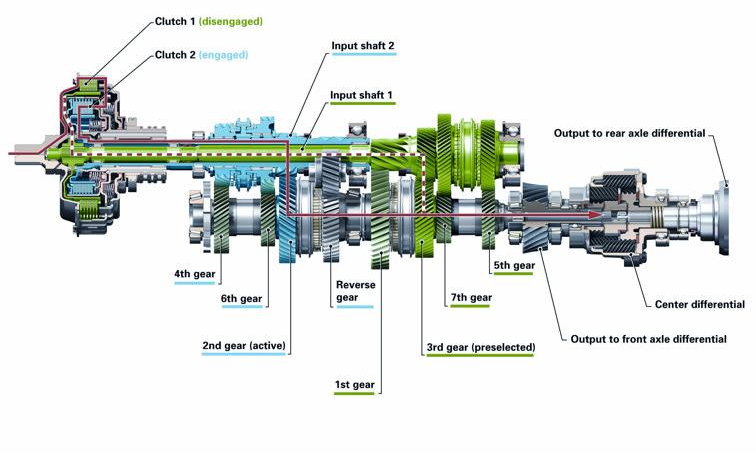
- •Internal combustion engine
- •The four-stroke cycle
- •Complete the sentences with the active form of the verb in brackets:
- •The carburetor
- •1. Translate the following text into Ukrainian in written form
- •2. Complete the sentences with the active form of the verb in brackets:
- •The crankshaft
- •The battery and coil
- •The contact breaker and the distributor
- •1. Complete the sentences with the active form of the verb in brackets:
- •The cooling system
- •The lubricating (oiling) system
- •1. Complete the sentences with the active form of the verb in brackets:
- •The transmission system
- •Neutral gear
- •The clutch
- •Rear axle gears
- •1. Translate the text in written form
- •2. Complete the sentences with the active form of the verb in brackets:
- •The brakes
- •Some differences
- •Complete the sentences with the active form of the verb in brackets:
- •Text 16
- •Put the missing prepositions into the questions. Ask them your partner:
- •Match the headings with their extracts.
- •The changing expectations of automotive engineers
- •Here are the answers to some questions. What are the questions?
- •Put each of the following words or phrases in correct sentence below.
- •Find the words hidden in the jumbles. Translate the sentences.
- •6. Complete the sentences with the passive form of the verb in brackets:
- •Complete the table with these phrases used to talk about the future. Can you add any more?
- •The car of the future
- •Are these sentences about the text true (t) or false (f)?
- •Find words and expressions in the text which match these definitions:
- •Find the words hidden in the jumbles:
- •Put the verb into the correct tense form in Passive.
- •Alternative vehicles
- •6. Answer these questions:
- •Make sure that you know these terms:
- •Match words from the two boxes to make expressions.
- •Now use the expressions above to complete the sentences and translate them into Ukrainian:
- •Match the words and phrases to the correct headings.
- •A car safety programme
- •Try to answer these questions asked by people in the audience.
- •Put the safety features into the correct column. Which of these safety features does your or your parents’ car have?
- •Use the words in the box to complete the flow chart.
- •Complete the text about car recalls with words from the box below. Translate the sentences.
- •Match the questions (1 – 7) with their answers (a – g):
- •Find someone in your class who:
- •Airbags
- •Answer the following questions:
- •Make sure that you know these terms:
- •Fill the missing words in. The first one has been done for you. Use them in the sentences of your own.
- •Complete the adjectives with –ed or –ing. Make some sentences of your own using them.
- •Read and translate this extract in written form:
- •Rewrite the sentences with a participle clause instead of a relative one.
- •Do you agree or disagree with the following statements?
- •Sensors and the automobile
- •Complete the sentences with the information from the text:
- •Which instrument shows you:
- •Match each abbreviation with its meaning:
- •Translate the following extract in written form: a cockpit for business class
- •Complete the sentences with a verb from the box in its participle form.
- •What are your predictions for the next ten years for instruments and switches of the car? Prepare a short report or presentation.
The cooling system
W hen
the engine
is working,
it gets
hot. The
heat comes
from the
explosion in
the cylinders
and from
friction. How
is it
kept cool?
This is
usually done
with water.
The water
flows from
the radiator.
It flows
through holes
in the
cylinder block.
The water
enters the
bottom of
the block.
When it
is hot
it rises
to the
top of
the block.
hen
the engine
is working,
it gets
hot. The
heat comes
from the
explosion in
the cylinders
and from
friction. How
is it
kept cool?
This is
usually done
with water.
The water
flows from
the radiator.
It flows
through holes
in the
cylinder block.
The water
enters the
bottom of
the block.
When it
is hot
it rises
to the
top of
the block.
From there it flows back into the top of the radiator. A small pump helps it to flow. The hot water from the engine flows slowly through the radiator. The air makes the water cool again. The flow of air is helped by a fan. The fan is moved by the crankshaft.
Some engines are cooled by air only, not by water.
Коли двигун працює, він стає гарячим. Тепло надходить від вибуху в циліндрах і від тертя. Як це зберігатися в холодному місці? Це зазвичай робиться з водою. Вода тече з радіатора. Вона тече через отвори в блоці циліндрів. Вода надходить у нижню частину блоку. Коли жарко піднімається у верхню частину блоку. Звідти він надходить назад у верхній частині радіатора. Невеликий насос допомагає їй текти. Гаряча вода з двигуна тече повільно через радіатор. Повітря робить воду прохолодною знову. Потік повітря допомагає вентилятором. Вентилятор приводиться в рух колінчастого вала. Деякі двигуни охолоджуються повітрям тільки, а не води.
The lubricating (oiling) system

There are many places in an engine where metal rubs against metal. For example, the piston rings rub against the cylinder walls; the crankshaft rubs against the inside of the big end. When this happens, the metal gets hot. This rubbing together of metal (friction) and the heat cause the engine to wear. This friction can be made less by using oil. There is a large container (the sump) at the bottom of the engine. The sump holds over 1 gallon (4.5litres) of oil. Many pipes and holes go from the sump. The oil flows through these to places where there is friction; the cylinder, the crankshaft. A pump in the sump pumps the oil to these places. The pump is worked by the camshaft.
Є багато місць, в двигуні, де метал треться об метал. Наприклад, поршневі кільця труться об стінки циліндра; колінчастий вал треться всередині великого кінця. Коли це відбувається, метал нагрівається. Це тертям металу (тертя), і тепло, викликає двигун носити. Це тертя може бути зроблений менше, використовуючи масло. Існує великий контейнер (картер) у нижній частині двигуна. Відстійник має більш 1 галон (4.5litres) нафти. Багато труби і отвори йдуть з відстійника. Масло проходить через них до місць, де є тертя; циліндра, колінчастого вала. Насос у відстійник насоси масла в цих місцях. Насос працював на розподільному валу.
1. Complete the sentences with the active form of the verb in brackets:
I ……… (to think) of selling my car. Would you be interested in buying it?
I used to drink a lot of coffee but these days I ……… (to prefer) tea.
We couldn’t afford to keep our car, so we ………. (to sell) it last year.
Jill is interested in politics but she ……… (not to belong) to any political party.
I haven’t seen Alan for ages. When I last ……… (to see) him, he ……… (to try) to find a good, well-paid job in London.
Look at the river. It ……… (to flow) very fast today – much faster than usual.
I ……… (to have) a headache earlier but I feel fine now.
The police ……… (to arrest) three people but later they let them go.
What do you think of my English? Do you think I ……… (to improve) it?
There was a new sports car outside. It ……… (to look) so smooth and shiny.
Many people are skeptical about advertizing promises. They ……… (not to believe) them.
None of the students ……… (to show) any interest in extra functions of this apparatus yet.
Amanda ………. (to look) a bit depressed last week as her car had been stolen.
I can’t make a decision, I ……… (not to receive) all the data.
The distributor............... (to distribute) the high voltage electricity to the sparking plugs.
Text 13

